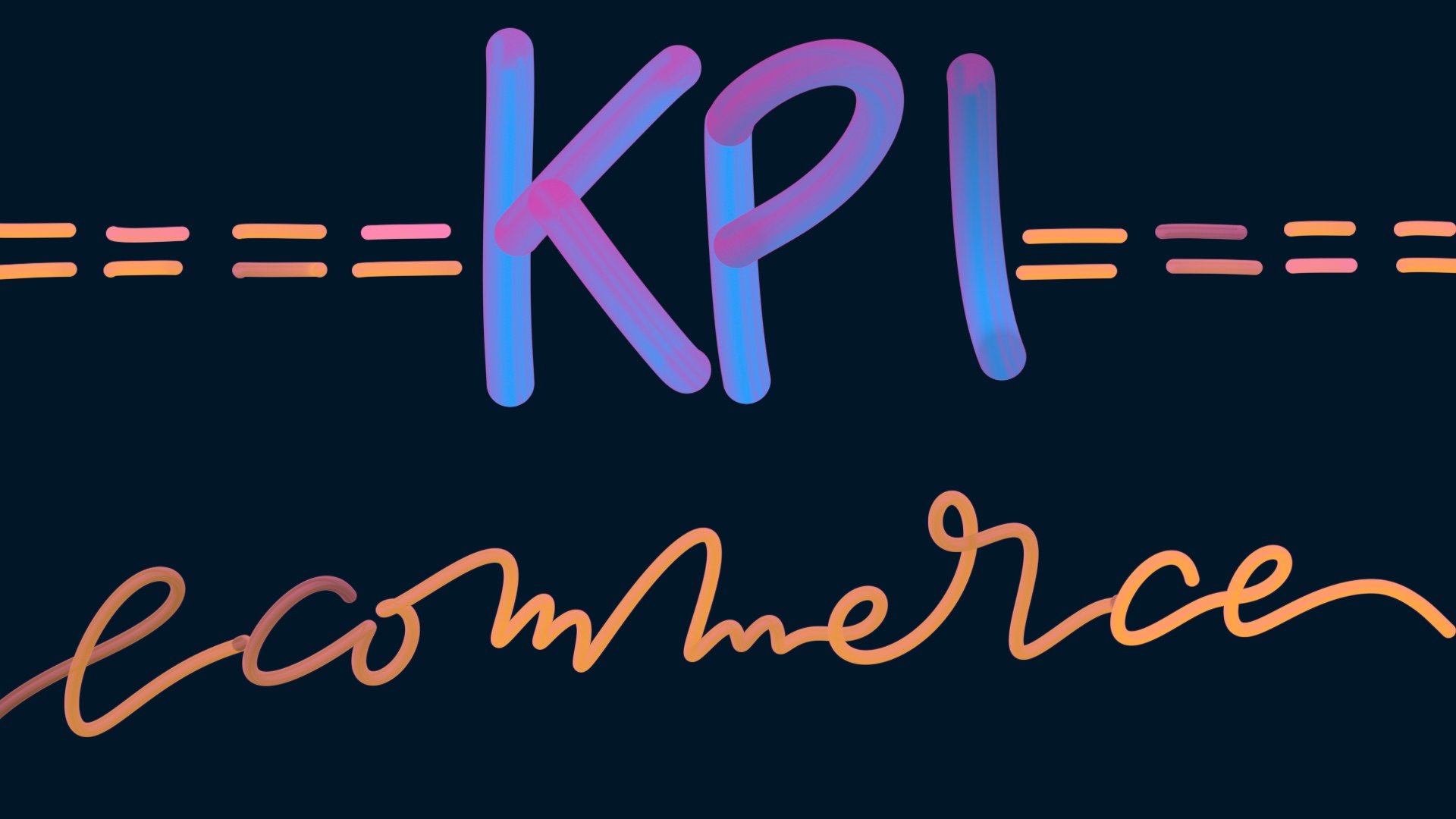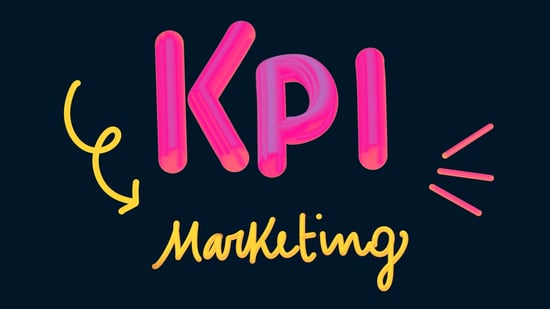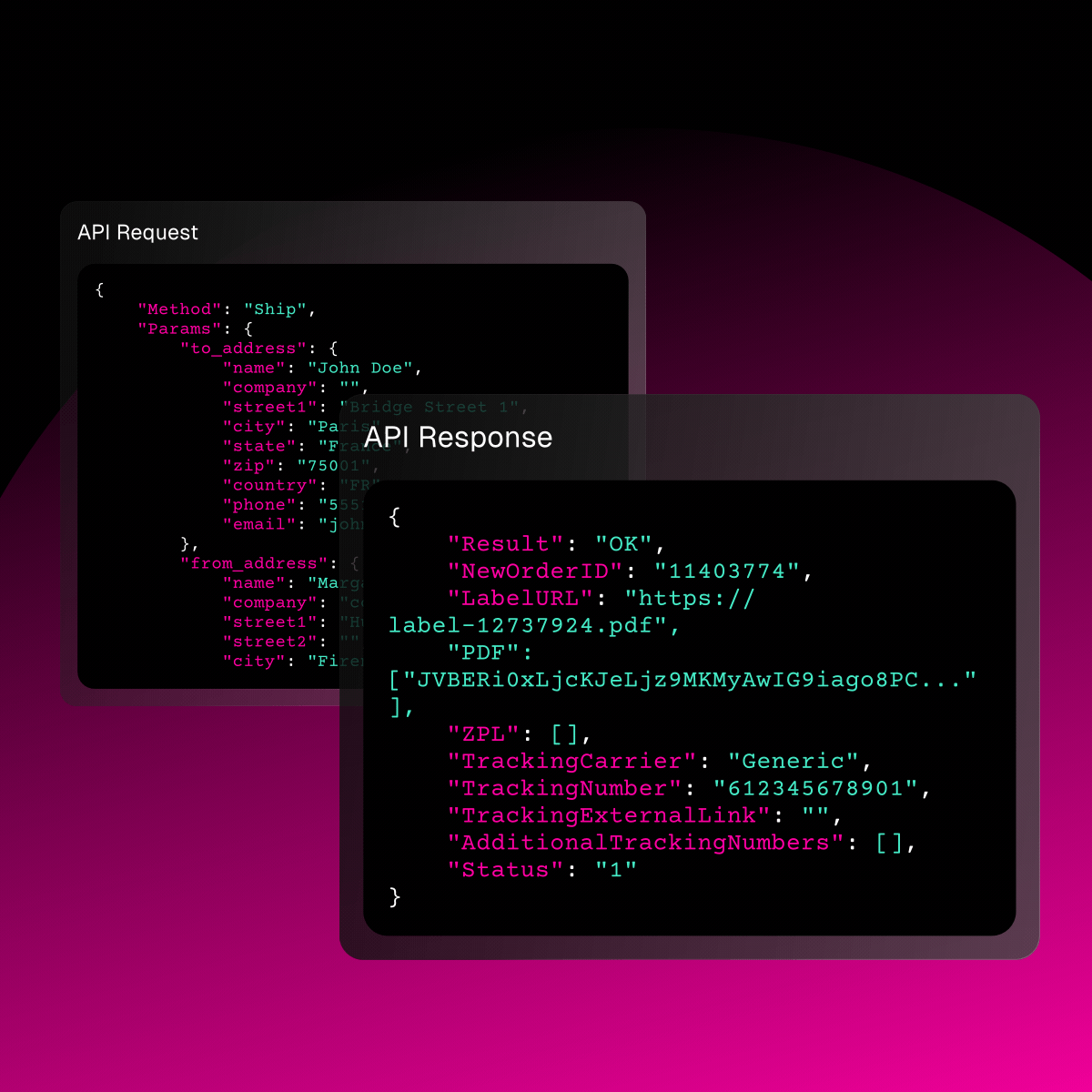KPIs for e-commerce: 84 metrics to measure your e-commerce
 By
Giulia Castagna
·
8 minute read
By
Giulia Castagna
·
8 minute read

Ecommerce is a complex ecosystem to manage. To run a successful online store, you need a diverse team with expertise in design, SEO, marketing, sales, logistics, customer management and compliance.
With such a multifaceted business it is crucial to monitor and analyse data. Therefore, consider these 84 ecommerce KPIs, the key performance indicators (ICP) to track your progress so you can confidently ensure the stability of your business.
What are KPIs?
KPIs (Key Performance Indicators) are metrics used by companies to track the progress of their activities and identify areas in which to increase investments or, conversely, cut them.
They are generally divided by area of expertise, so it is possible to find KPIs for sales, warehouse management, social media, finance, marketing, SEO, project management…
84 ecommerce KPIs to monitor
We have divided the various ecommerce performance indicators based on each aspect that can be monitored. Below you will find:
- 12 KPIs for ecommerce shipments
- 15 ecommerce sales KPIs
- 7 customer service KPIs
- 12 social media marketing KPIs
- 12 KPIs for ecommerce website
- 10 marketing KPIs
- 10 warehouse KPIs
- 6 ecommerce project management KPIs
12 KPIs for ecommerce shipments
When dealing with an online store, ecommerce shipments KPIs cannot be missing. Here are the main ICPs:
- Average shipping time: calculated from the order placed by the user until the moment of successful delivery
- Percentage of failed deliveries
- Percentage of damaged shipments
- Average shipping cost
- Average delivery time: the duration from the moment the courier takes charge of the order and its successful delivery to the recipient
- Average Lost shipments
- Average number of delivery attempts: how many attempts does a courier have to make before being able to deliver an ecommerce package? This is the right KPI to find out about it
- Percentage of shipments with delivery in store: metric to measure the impact of Click & Collect
- Percentage of weekend deliveries: since this is an additional "Premium" service, it is worth monitoring this KPI to understand if it is a benefit that your customers are actually using or not
- Percentage of out of home deliveries
- First delivery attempt: the duration from the moment a parcel is collected by the courier and its first delivery attempt
- Percentage of shipments with address errors: address errors can lead to shipments on hold and, consequently, to extra costs - not to mention customer frustration. These errors can easily be avoided with tools like ShippyPro's CheckAddress API.
15 sales KPIs for ecommerce

These are the performance indicators linked to the sales of an ecommerce. Here are the main ones:
- Turnover: all the proceeds earned by an ecommerce. Turnover is a gross figure
- Average revenue per user: the gross revenue divided by the total number of customers
- Profit: the earnings after marketing, management and tax costs are deducted
- Gross margin: the difference between net sales and cost of goods sold. Practically:
(net sales - cost of goods sold) / net sales
- AOV (Average order value): the ratio between the total purchased and the number of ordersù
- Sales per season: the ideal performance indicator to identify peak periods for your ecommerce
- Sales per SKU: the ecommerce KPI to identify the best-selling products. It can be verified on an annual or periodic basis
- Sales per brand: ideal for multi-brand ecommerce that need to identify best-selling brands
- COGS (Cost of Goods Sold)
- RPR (Repeat Purchase Rate): percentage of unique customers who have made multiple purchases. Basically:
Unique customers with multiple purchases / Unique customers with one purchase x 100
- CAC (Customer Acquisition Cost): valid for marketing KPIs, CAC is nothing more than the total spent to acquire a customer from campaigns or initiatives and the number of customers acquired
- CLTV (Customer Lifetime Value): average value of a purchase x average purchase frequency x average duration of the customer relationship
- Conversion rate: the ratio between the number of purchases and the total number of customers on the site (x 100)
- Cart abandonment rate: the ratio between the number of users who do not complete the purchase and the total number of carts created
- Churn rate: the percentage of customers who interrupt the relationship with the company in a defined period of time.
7 customer service KPIs for ecommerce
Customer service KPIs are the key performance indicators to monitor the condition and progress of your customer service, a fundamental element for the success of an ecommerce.
- Net Promoter Score (NPS): measures customer satisfaction. In particular, Net Promoter Score measures the infamous "word of mouth" by asking customers "From 1 to 10, how much would you recommend this brand to your friends and colleagues?". It is called Net Promoter Score because whoever obtains a score of 9 or 10 is considered a "promoter" of the company
- Customer service cost per order: it can be calculated dividing the total customer service costs by the total number of orders received in a specific period of time
- Ticket closure time: the duration from when the user opens a support request until it is closed and resolved. Reducing this time frame means guaranteeing a positive customer experience for the customer
- Time of first contact: the amount of time between sending a support request and the first message from customer service. Sending a timely first message is essential to make the customer feel reassured and in good hands
- Customer Satisfaction (CSAT): assesses the level of satisfaction of a customer after interacting with customer service
- Customer Effort Score (CES): as with CSAT, it is a performance indicator measured after interacting with customer service. In this case, users are asked to rate the effort required to solve the problem on a scale from "very easy" to "very difficult"
- Ticket abandonment rate: the percentage of tickets abandoned before customer service could intervene.
12 social media marketing KPIs
.jpg?width=550&height=309&name=ShippyPro_Blog_KPI-social%20(1).jpg)
Here are some specific performance indicators for social media:
- Number of followers
- Number of impressions: how many times a post appears and is viewed on other people's feed. It is an index of the coverage and virality of a content
- Engagement rate: the ratio between the number of interactions (comments, likes, clicks and shares) and the number of users viewing the post
- Reach: the number of unique accounts that see the post
- Social Media Lead: the number of contacts generated by social media advertising posts or campaigns (such as Instagram Ads)
- Customer Acquisition Cost (CAC): the cost of acquiring a customer through social networks
- Social Share of Voice: number of mentions received by the brand on social networks
- Sentiment: how users perceive the brand. It is measured as Positive, Negative or Neutral
- Video Views: number of views of a video post
- Watch time
- Influencer Engagement: the percentage of engagement of the influencers with whom a company collaborates or intends to start a partnership
- Virality rate: the number of shares in relation to the total number of views.
12 website traffic KPIs
In this section we listed the ICPs related to website traffic, also considering elements such as devices and referral:
- Mobile vs desktop traffic: useful for understanding where your customers are buying from and to improve the user interface for that specific channel;
- Traffic from social networks: how many users land on the site after seeing a post or sponsorship? This data, like the previous one, can be easily tracked with tools such as Google Analytics;
- Traffic: the total number of visits regardless of the channel of origin;
- Organic traffic: the number of visits generated by unpaid channels. In particular, they are users who go on the site after doing searches on engines like Google or Bing;
- Referral traffic: the number of visits from external links (other sites, blogs, ecommerce...)
- Unique users: the total number of unique users (so a returning user still counts as 1 regardless of the number of sessions);
- Returning users: the number of users who visit the site more than once in a given period of time;
- Time on page: how much time a user spends on a page;
- CTR (Click-Through Rate): the percentage of clicks from search results pages. This is the ratio between the number of clicks and the total number of impressions;
- Average ranking: the average organic ranking of a page or specific keyword. It can be checked on Google Search Console;
- Pages per session: the total number of pages visited by a user within a browsing session;
- Page loading time: site performance is closely linked to positioning and, consequently, traffic.
We asked Antonio Mattiacci - an experienced SEO consultant - for his contribution on the topic:
I think that data must always be analysed in context. KPIs must first be established based on business objectives and the messy middle funnel - not all metrics should always be used in reports, but only those that are useful to interpret a given situation.
- The context. It varies according to the business objectives and the point of the journey in which the user is intercepted with certain SEO activities.
- Indirect KPIs. They are not exclusively tied to the SEO activity within a multi-channel context but in any case they are linked to it. Perhaps because the user was hooked up at a time prior to the purchase, contributing to the brand awareness that later helped in decision making, namely conversions and sales.
10 marketing KPIs

We have dedicated an entire article to marketing KPIs if you wish to learn more about the topic. Here are the main ICPs:
- Marketing spend: the total cost of marketing activities
- ROAS (Return On Advertising Spend): basically it is the return on investment (ROI) but specific for an advertisement campaign (social media or Google Ads)
- MQL (Marketing Qualified Lead): a lead who is more likely to convert because the customer has shown a certain interest in corporate marketing activities
- SQL (Sales Qualified Lead): a hot lead ready to be contacted by the sales team
- Conversion rate: already present in the sales KPIs, the conversion rate in marketing is the percentage of people who complete a desired action (download a material, subscribe to the newsletter, create an account, make a purchase...)
- Email delivery rate: the ratio between delivered emails and the total number of emails sent (x 100)
- Email open rate: the ratio between opened emails and the total number of emails delivered (x 100)
- Email click rate: the click rate within an email
- Unsubscribe rate: the percentage of people who unsubscribe from the mailing list
- Gross rating point (GRP): a marketing KPI that measures the power of a traditional advertising campaign. It is calculated by multiplying the percentage of the population exposed to the advertising campaign (the coverage) by the average frequency of exposure of the ad.
We asked Sante Antonio Occhiuzzi - Digital Marketing Manager of Byte-Code - which other ecommerce KPIs to add to this list.
The metrics in the list are all useful, personally I would add:
Moreover, it is often useful to do analyze the following:
- MER (Marketing Efficiency Ratio): it is the ratio between advertising expenditure and total turnover;
- MER new customers: adv expenses / turnover of new customers;
- Add To Cart (ATC) / view
- Checkout / view
- Purchase/ view
10 warehouse KPIs
To manage a successful ecommerce, it is essential to keep an eye on logistics and warehouse management. Here are the main warehouse KPIs to monitor:
- Inventory rotation: measurable with ABC analysis, assesses the frequency at which an item (or multiple items) is depleted from inventory and requires restocking
- Out of stock: when a product is out of stock but the demand from customers does not cease;
- Order cycle time: the average time required to process and deliver an order
- Percentage of unusable stocks: these are products in stock that can no longer be sold for various reasons (damaged or expired products, expiration of copyrights…)
- Average cost of inventory: the average cost of products in inventory in a given period of time
- Use of space: an indicator to understand how full the warehouse is compared to its size. A way to optimize the available space
- Logistics shrinkage: the decrease or loss of products along the logistics chain. It indicates the reduction of products for various reasons (loss of packages, loss of value, fewer pieces, obsolescence, expiry…). It is calculated using the following formula:
(Cost of Registered Inventory – Cost of Physically Present Inventory) / Cost of Registered Inventory
- Storage cycle time: this is used to calculate the time to withdraw an item from your inventory. The shorter it is, the greater the warehouse efficiency. This indicator is useful for optimizing the positioning of products in the warehouse
- Back-order rate: KPI used to measure the percentage of orders that were not processed immediately because one or more products were temporarily unavailable or out-of-stock
- Incidents per year: a performance indicator directly linked to safety. If the number is not equal to zero, it is necessary to intervene, intensifying employee protection measures and improving the company’s safety practices.
6 e-commerce project management KPIs
To manage the complexity of an ecommerce, a project management activity cannot be missing, as it helps to define the strategy and the steps to follow. Here are the main performance indicators:
- Budget
- CPI (Cost Performance Index): it is used to measure cost effectiveness compared to project performance. A CPI equal to or greater than 1 indicates that a team is using the resources at its disposal correctly
- Completion time: the time between the opening of a task and its closure
- Time forecast vs time spent: measuring this gives you an idea of your team's forecasting ability
- Expected budget vs spent budget: as in the previous case, having a large delta between the two values means that the team has under or overestimated a project
- Number of due date changes: how many times has the deadline for an activity been postponed? What are the reasons? Low priority or underestimated workload?
- Available resources: number of people working on a project and the time they can dedicate to it every day/week/month
- Total hours worked.
In conclusion
Here we are at the end of this very long overview of ecommerce KPIs. We have explored the most relevant areas and, for reasons of space, we have only listed the main ecommerce KPI metrics. As always, it is appropriate to select the relevant performance indicators for your business - you don’t want to end up spending more time measuring than running it.

Curious by nature, analytical by mindset, Giulia Castagna is the voice behind ShippyPro’s content. As Content Marketing Manager, she simplifies complex logistics topics for those who ship around the world every day. She writes about AI, automation, and shipping trends to inspire data-driven decisions.






.webp)



.webp)

